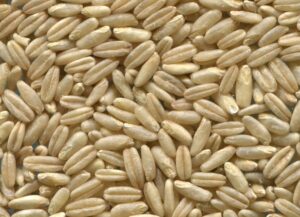Alvaro Garcia
Sorghum for grain is a popular crop in parts of the world where water availability can hamper adequate corn yields. In addition to better coping with dry conditions, sorghum is also more resistant to the attack of insects, and molds. The reason for this is the presence of tannins in some sorghum varieties.
Tannins are phenolic compounds present in the protein matrix of the endosperm that protect the starch from degradation by enzymes. What is advantageous to the grain, however, is detrimental for cattle performance since it reduces the digestible energy available. Physical methods of processing such as rolling and fine grinding disrupt this protein matrix and help reduce this resistance to starch degradation.
What problems will we have if we store high moisture sorghum?
Another approach is to ensile the crop as high moisture sorghum. Aside from reducing the need for storage of large amounts of dry grain, it also helps increase its degradability. Fungi spores present everywhere in farms (air, soil, farm equipment, etc.) are opportunistic organisms that will attack the grain when it is weakened, stressed or damaged. Similarly, they will also affect during transportation, storage, and feed-out when not using best management practices. One concern then when storing high moisture grains is the development of these molds and their mycotoxins.
The most typical storage molds are from three genera: Aspergillus, Fusarium, and Penicillium. Several different mycotoxins are produced by these molds with some even producing more than one mycotoxin. Different types of molds and its toxins can frequently show up in sorghum grain both preharvest (i.e. Aspergillus and Fusarium) or postharvest (i.e. Penicillium).
Mycotoxins are not only of concern to livestock performance and health but also constitute a problem for humans once eliminated in livestock products. One example is the ingestion of aflatoxin B1 by dairy cows, which is then metabolized to aflatoxin M1 which shows-up in milk. This metabolite is one of the most potent known natural carcinogens.
Assessing mold development in high moisture sorghum grain silage
A recent experiment (García et al., 2020) was conducted to evaluate fermentation kinetics and the development of toxicogenic molds in high moisture sorghum grain silage. The parameters evaluated were the effects of grain variety, storage time, chemical composition, in vitro fermentation, and populations of total fungi and their toxicogenic genera.
Samples of bagged high-moisture sorghum grain silages were collected from commercial dairy farms. Two of the bags contained high-tannin varieties (HT, genotypes Morgan 108 and ACA 558), the other two low-tannin varieties (LT, genotypes Flash10 and ACA 546).
High-moisture grain silages were harvested at approximately 30% moisture, chopped, and bagged. Grain samples were collected during ensiling (day 0), and then on days 30, 90, and 180 of storage. Subsamples were obtained manually cutting through the bag at 6 equidistant points, at 50-cm deep, and from 3 the top, middle, and bottom.
How did the tannin content and the presence of mold evolve?
High-tannin sorghum grains had higher ADF, tannins, gas production, and lower starch and rate of gas production. Starch and protein contents increased for both varieties. Tannins decreased in both varieties, whereas organic matter increased in the high tannin variety but decreased in the low tannin varieties.
Gas production rate increased with storage time for both varieties. High tannin sorghum saw a reduction in the number of Aspergillus colonies, while the low tannin varieties showed an increase in Penicillium. Storage time was important to reduce condensed tannins, increase gas production and minimize mold contamination, particularly on the high tannin sorghum varieties.
The authors concluded that a storage time of 180 days maximized the reduction of condensed tannins, increasing fermentation speed as measured by gas production, and minimizing mold development, both in high and low tannin sorghums. They concluded however that 90 days are enough to significantly reduce contamination of molds by these three genera.
Reference
C. García y Santos, L. Bettucci, S. Brambillasca, C. Cajarville. Storage time and condensed tannin content of high-moisture sorghum grains: Effects on in vitro fermentation and mold populations. Animal Nutrition, Volume 6, Issue 1, March 2020; 92-97.
© 2020 Dairy Knowledge Center. All Rights Reserved.









